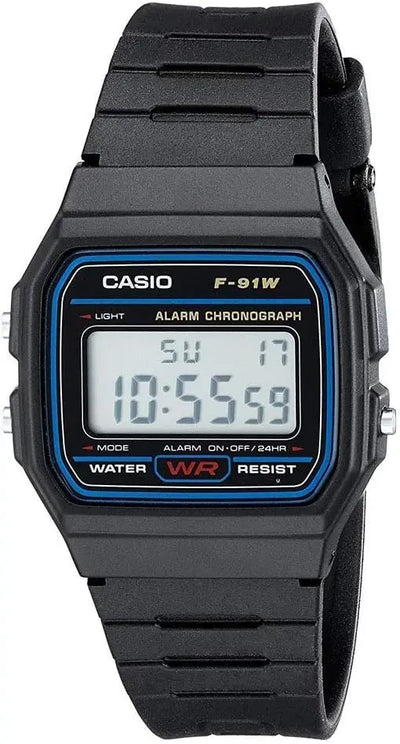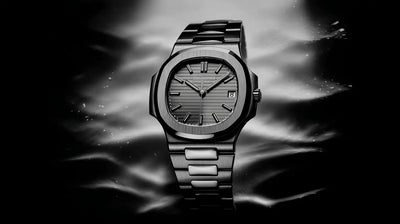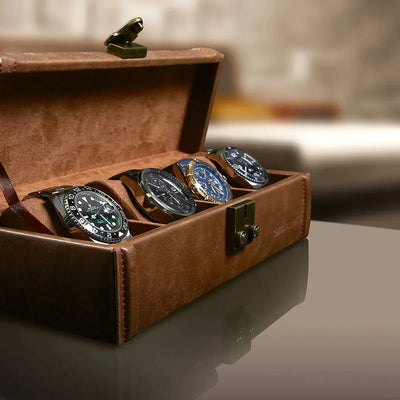
What is the best-selling watch in the world?
Which watch is the best-selling in the world among all the brands and models available on the market? We will explore...



The tachymeter isn’t just a fancy feature on a watch; it’s a valuable tool that measures speed over a given distance. Whether it’s used by athletes to measure their performance or chefs to time a recipe, this watch complication has multiple applications. Here are the key points to understand:

The tachymeter, originally designed for aviation and motor racing, made its appearance on wristwatches in the early 20th century. Adapted to help pilots and drivers measure their speed over a known distance, this tool quickly found its way into the sports world and beyond.
Over the decades, tachymeter technology has evolved from simple scales printed on dials to more complex integrated systems that provide increased accuracy. To understand this evolution in more depth, you can check out the article on automatic watches and their technical sophistication .
Table of Historical Tachometers that have marked their years
| Year | Model | Notable feature |
|---|---|---|
| 1950 | Omega Speedmaster | First chronograph with tachymeter used in space |
| 1963 | Rolex Daytona | Tachymeter scale engraved on the bezel for racing |
| 1970 | TAG Heuer Monaco | Automatic chronograph with tachymeter function |
| 1990 | Audemars Piguet Royal Oak | Integration of chronograph and tachymeter functions |
Expert tip : When purchasing a watch with a tachymeter, consider not only the readability of the tachymeter scale but also the accuracy of the chronograph mechanism. Good readability ensures that you can use your watch effectively in all conditions.
Our selection of Watch boxes can help keep your watches in perfect condition.


At the heart of a tachymeter's functionality is the ability to measure speed based on elapsed time. The principle is simple: once you know the distance, the tachymeter scale on the bezel or dial of your watch will tell you allows you to calculate the speed at which this distance has been covered. For example, if you start the chronograph at the beginning of a kilometer and stop it once this kilometer has been covered, the hand will directly indicate the speed on the tachymeter scale.
This method can be used in various scenarios, ranging from sports activities to industrial applications, where speed measurement is crucial.
The tachometer is not limited to racing or aviation professionals. It is also very popular in everyday activities. Chefs can use it to time the perfect cooking of a steak, cyclists to measure their speed during training, or even in the medical field to track the speed of certain procedures.
When choosing a watch with a tachymeter, there are several factors to consider:
For more information on the selection criteria, see our guide on how to choose a watch .
To ensure the longevity and accuracy of your tachymeter watch, regular maintenance is essential. Here are some tips to keep your watch in perfect condition:
For more tips on maintaining automatic watches, feel free to read our dedicated article here .
The tachymeter remains a fascinating and useful feature incorporated into many modern watches. Whether you’re a professional who needs to measure precise speeds or a watch enthusiast who appreciates technical complexity, understanding and using a tachymeter properly can enrich your watchmaking experience. Explore our collection to see how different brands incorporate this feature into their sophisticated and elegant designs.

Which watch is the best-selling in the world among all the brands and models available on the market? We will explore...

It leaves no trace. No scratches, no dents. Nothing visible. And yet, magnetism is one of the quietest enemies of your automatic watch. ...

The world of watch boxes offers a multitude of options to meet various needs and preferences. From a simple storage box to...
Leave a comment
This site is protected by hCaptcha and the hCaptcha Privacy Policy and Terms of Service apply.